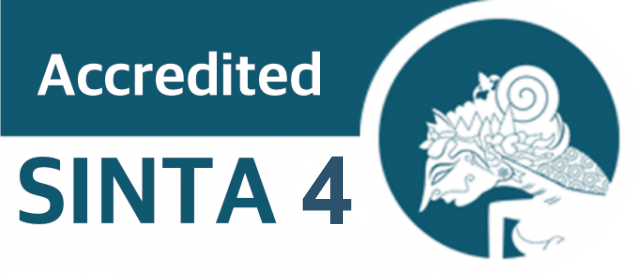The Effect of SrVER Learning Model-Assisted Augmented Reality to Improve Students Learning Outcomes in Science Topic
DOI:
10.29303/jpm.v20i2.8665Published:
2025-03-26Issue:
Vol. 20 No. 2 (2025)Keywords:
Augmented Reality (AR); Learning Outcomes; Science; SrVER ModelArticles
Downloads
How to Cite
Downloads
Metrics
Abstract
Science learning plays an important role in developing students' thinking skills and awareness of the environment. One effort to improve the quality of science learning is by implementing innovative and engaging learning models. This study aims to determine the effect of the SrVER learning model assisted by augmented reality (AR) media on students' science learning outcomes. The SrVER learning model is a learning approach that emphasizes students' visual learning styles. This study employs a quantitative quasi-experimental method with a non-equivalent control group design. The population consists of all eighth-grade students at SMP Negeri 2 Mataram, with a sample of 160 students from four classes. The sampling technique used was purposive sampling. Data were analyzed using ANCOVA after meeting prerequisite tests such as normality and homogeneity. The study shows a difference in the experimental class's average pretest and posttest scores, with an average pretest score of 35.5 and a posttest score of 66.775. The ANCOVA test results obtained a significance value of 0.000 < 0.05, indicating that Ho is rejected and Ha is accepted. This means the SrVER learning model assisted by augmented reality (AR) significantly affects students' science learning outcomes.
References
K. Amali, Y. Kurniawati, and Z. Zulhiddah, “Pengembangan Lembar Kerja Peserta Didik Berbasis Sains Teknologi Masyarakat Pada Mata Pelajaran IPA di Sekolah Dasar,” J. Nat. Sci. Integr., vol. 2, no. 2, p. 70, 2019, doi: 10.24014/jnsi.v2i2.8151.
S. Sulistriani, J. Santoso, and S. Oktaviani, “Peran Guru Sebagai Fasilitator Dalam Pembelajaran Ipa Di Sekolah Dasar,” J. Elem. Sch. Educ., vol. 1, no. 2, pp. 57–68, 2021, doi: 10.52657/jouese.v1i2.1517.
A. Aini and A. Hadi, “Peran guru dalam pengelolaan kelas terhadap hasil belajar siswa sekolah dasar,” J. Pendidik. Guru Madrasah Ibtidaiyah Al-Amin, vol. 2, no. 2, pp. 208–224, 2023.
A. R. Tibahary and M. Muliana, “Model-Model Pembelajaran Inovatif,” Scolae J. Pedagog., vol. 1, no. 1, pp. 54–64, 2018, doi: 10.56488/scolae.v1i1.12.
A. Rukajat, “Pembelajaran contextual teaching and learning untuk meningkatkan mutu hasil pembelajaran,” PIONIR J. Pendidik., vol. 5, no. 3, pp. 85–111, 2020.
N. Utami, K. Khairuddin, and M. Mahrus, “Perbedaan Hasil Belajar Biologi Siswa pada Penggunaan Media Video dengan Media Powerpoint Melalui Pembelajaran dalam Jaringan (Daring) di SMAN 3 Mataram Tahun Ajaran 2020/2021,” J. Ilm. Profesi Pendidik., vol. 5, no. 2, pp. 96–101, 2020, doi: 10.29303/jipp.v5i2.120.
I. W. M. Amijaya, Lalu sunarya., Agus Ramdani., “Pengaruh Model Pembelajaran Inkuiri Terbimbing Terhadap Hasil Belajar Dan Kemampuan Berpikir Kritis Peserta Didik Model Pembelajaran Inkuiri Terbimbing Terhadap Hasil Belajar Dan Kemampuan Berpikir Kritis Peserta Didik,” Jurnal Pijar Mipa, vol. 13, no. 2, pp. 94–99, 2018, doi: 10.29303/ jpm.v13.i2.468.
B. S. Handayani, T. A. Lestari, E. Suyantri, and I. M. Sukma., "Development Of Visual Learning Style-Based Learning Model Biology Subject," Biosfer : Jurnal Pendidikan Biologi., vol. 18, no. 1, pp. 115–125, 2025.
A. S. Whiti Estari Negeri, “Pentingnya Memahami Karakteristik Peserta Didik dalam Proses Pembelajaran,” Work. Nas. Penguatan Kompetensi Guru Sekol. Dasar SHEs Conf. Ser., vol. 3, no. 3, pp. 1439–1444, 2020.
F. Armansyah, S. Sulton, and S. Sulthoni, “Multimedia Interaktif Sebagai Media Visualisasi Dasar-Dasar Animasi,” J. Kaji. Teknol. Pendidik., pp. 224–229, 2019, doi: 10.17977/um038v2i32019p224.
Febriyanti, H. Ahmad, M. Ali, and Muryati, “Efektivitas Strategi Pembelajaran Elaborasi Dengan Media Card Sort Terhadap Hasil Belajar Matematika,” Pros. Semin. Nas., vol. 3, no. 1, pp. 28–34, 2017.
E. Yuliyanto, F. F. Hidayah, E. P. Istyastono, and Y. Wijoyo, “Analisis Refleksi pada Pembelajaran: Review Reasearch,” Semin. Nas. Edusaintek, pp. 30–36, 2018.
M. Rizaludin, F. K. Fikriah, and H. Hidayat, “Pengenalan Augmented Reality (AR) Sebagai Media Pembelajaran Di SMK NU Kesesi,” J. Pengabdi. Masy. TEKNO, vol. 3, no. 2, pp. 77–83, 2022.
R. Permana, Eka Praja Wiyata Mandala, and Dewi Eka Putri, “Augmented Reality dengan Model Generate Target dalam Visualisasi Objek Digital pada Media Pembelajaran,” Maj. Ilm. UPI YPTK, vol. 30, no. 1, pp. 7–13, 2023, doi: 10.35134/jmi.v30i1.143.
A. Fakhrudin and A. Kuswidyanarko, “Pengembangan Media Pembelajaran Ipa Sekolah Dasar Berbasis Augmented Reality Sebagai Upaya Mengoptimalkan Hasil Belajar Siswa,” J. Muara Pendidik., vol. 5, no. 2, pp. 771–776, 2020, doi: 10.52060/mp.v5i2.424.
A. Agustin and H. Aqua Kusuma Wardhani, “Pengaruh Media Augmented Reality (Ar) Berbantuan Assemblr Edu Terhadap Hasil Belajar Siswa Smp It Robbani Sintang,” Edumedia J. Kegur. dan Ilmu Pendidik., vol. 7, no. 2, pp. 7–13, 2023, doi: 10.51826/edumedia.v7i2.952.
Sugiyono, Metode Penelitian Kuantitatif, Kualitatif, dan R&D. Bandung: Alfabeta, 2013.
H. Muammar, A. Harjono, and G. Gunawan, “Pengaruh Model Pembelajaran Assure dan Pengetahuan Awal Terhadap Hasil Belajar IPA-Fisika Siswa Kelas VIII SMPN 22 Mataram,” J. Pendidik. Fis. dan Teknol., vol. 1, no. 3, pp. 166–172, 2017, doi: 10.29303/jpft.v1i3.254.
N. Ritonga, “"Pengaruh Pemanfaatan Alat Visualisasi Gambar Terhadap Hasil Belajar Biologi Siswa Mts Ar-Rasyid Pinang Awan.,” J. Eduscience, vol. Vol 2, No, no. 1, pp. 10–18, 2015.
E. K. K. Hia, A. S. Harahap, and A. W. Nugraha, “Pengaruh Media Pembelajaran Berbasis 3D Dan Animasi Molekul Dengan Kooperatif Tipe Savi Terhadap Hasil Belajar Kimia Siswa SMA Kelas X Pada Materi Larutan Elektrolit Dan Non Elektrolit,” Educenter J. Ilm. Pendidik., vol. 1, no. 6, pp. 390–395, 2022, doi: 10.55904/educenter.v1i6.188.
M. Sholihah and N. Amaliyah, “Peran Guru Dalam Menerapkan Metode Diskusi Kelompok Untuk Meningkatkan Keterampilan Berpikir Kritis Siswa Kelas V Sekolah Dasar,” J. Cakrawala Pendas, vol. 8, no. 3, pp. 898–905, 2022, doi: 10.31949/jcp.v8i3.2826.
Nafizatunni’am, AA Sukarso, T. A. Lestari and Jamaluddin, “Pengaruh Model Problem Based Learning Terhadap Keterampilan Berpikir Kreatif Dan Hasil Belajar Biologi Siswa,” J. Classr. Action Res., vol. 5, no. 4, pp. 494–503, 2024, doi: 10.61692/edufa.v2i2.111.
E. C. Wowor, W. Anjelia Tumewu, and Y. B. Mokalu, “Implementasi Repetitive Method Melalui Kegiatan Refleksi Dalam Pembelajaran Implementation of the Repetitive Method Through Reflection Activities in Learning,” SOSCIED J. Soc. Sci. Educ., vol. 5, no. 2, pp. 272–279, 2022.
A. Ningsih, “Pengaruh Keaktifan Siswa Terhadap Hasil Belajar Ekonomi Kelas X di SMAN 2 Gunung Sahilan,” J. Pendidik. Ekon. Akunt. FKIP UIR, vol. 6, no. 2, pp. 157–163, 2018.
J. H. Akbar, M. Muhlis, G. Hadiprayitno, and I. P. Artayasa, “Perbedaan Prestasi Belajar IPA Menggunakan Model Pembelajaran Sains Teknologi Masyarakat (STM) dengan Model Problem Based Learning (PBL) di SMPN 7 Mataram,” J. Ilm. Profesi Pendidik., vol. 9, no. 2, pp. 1016–1022, 2024, doi: 10.29303/jipp.v9i2.2220.
L. D. Sasmitha, G. Hadiprayitno, M. L. Ilhamdi, and A. W. Jufri, “Pengaruh Media Pembelajaran Berbasis Android terhadap Hasil Belajar dan Keterampilan Proses Sains Siswa,” J. Classr. Action Res., vol. 5, pp. 292–298, 2023, doi: 10.29303/jcar.v5iSpecialIssue.4263.
R. Thahir and R. Kamaruddin, “Pengaruh Media Pembelajaran Berbasis Augmented Reality (Ar) Terhadap Hasil Belajar Biologi Siswa Sma,” J. Ris. dan Inov. Pembelajaran, vol. 1, no. 2, pp. 24–35, 2021, doi: 10.51574/jrip.v1i2.26.
A. K. Dewi, I. Ayuwanti, and A. Setyawati, “Perbandingan Model Pembelajaran Problem Posing Dengan Pembelajaran Konvensional Terhadap Hasil Belajar Matematika Siswa Kelas Viii,” J. Ilm. Mat. Realis., vol. 5, no. 1, pp. 84–89, 2024, doi: 10.33365/ji-mr.v5i1.5097.
Author Biographies
Muslimah Elynati, Biology Education Department, University of Mataram
Baiq Sri Handayani, Biology Education Department, University of Mataram
Tri Ayu Lestari, Biology Education Department, University of Mataram
Jamaluddin Jamaluddin, Biology Education Department, University of Mataram
License
Copyright (c) 2025 Muslimah Elynati, Baiq Sri Handayani, Tri Ayu Lestari, Jamaluddin Jamaluddin

This work is licensed under a Creative Commons Attribution 4.0 International License.
The following terms apply to authors who publish in this journal:
1. Authors retain copyright and grant the journal first publication rights, with the work simultaneously licensed under a Creative Commons Attribution License 4.0 International License (CC-BY License) that allows others to share the work with an acknowledgment of the work's authorship and first publication in this journal.
2. Authors may enter into separate, additional contractual arrangements for the non-exclusive distribution of the journal's published version of the work (e.g., posting it to an institutional repository or publishing it in a book), acknowledging its initial publication in this journal.
3. Before and during the submission process, authors are permitted and encouraged to post their work online (e.g., in institutional repositories or on their website), as this can lead to productive exchanges as well as earlier and greater citation of published work (See The Effect of Open Access).











